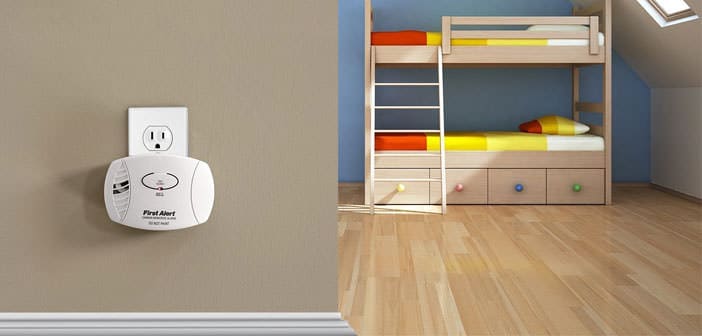Even if you perform ordinary maintenance of all the heating systems in your home, buying a carbon monoxide alarm means ensuring a higher safety level and avoiding nasty surprises. When carbon monoxide exceeds the limit (30 ppm to 50 ppm), an acoustic and luminous alarm is activated to warn of the danger.
In that case, it is necessary to open doors and windows immediately and switch off the heating, after which it is advisable to have the systems and flues inspected as soon as possible.
Carbon monoxide is a toxic gas produced by the combustion of heating systems such as stoves, boilers, or fireplaces. If not perfectly working, dirty, or clogged, these systems’ pipes and flues can release part of this gas inside the house, with consequences, sometimes fatal.
Unfortunately, this gas is completely odorless and can be inhaled inadvertently without immediate consequences. Sometimes, it causes nausea, dizziness, and general malaise, but these symptoms are not always immediately associated with the gas and can cause fainting before we realize what is happening. Therefore, having a CO detector at home can make a difference and sometimes save your life.
Table of Contents
How to choose a carbon monoxide alarm: Types and Characteristics
The first distinction lies in the type, i.e., a carbon monoxide alarm with a battery or electric current. Batteries make it easier to install in any part of the house. In contrast, the current ones are connected directly to the power line and are more sensitive and expensive. We also have to deal with the possibility that the detector will switch off if the current is missing. Therefore, the most common type in civil homes is the battery-powered one.
Having made this distinction, the most important characteristics to be evaluated in the choice are:
- Acoustic alarm: the acoustic alarm must be strong, generally over 70 decibels. This is because it must be felt throughout the house, and wake up if we sleep. If we are not at home instead, as the burglar alarms, it is good that even the neighbors are alerted. The most sophisticated models have a guide warning voice that explains what type of problem is encountered in addition to the siren buzzer.
- Multifunction detector: some models on the market that, in addition to carbon monoxide alarms, also act as gas detectors and can report even the smoke of a fire or natural gas. In this case, we have broad-spectrum protection on all the possible problems that can occur at home.
- Fixed or portable: A portable carbon monoxide detector can be useful in addition to the classic model installed at home. Suitable, for example, when traveling, in a holiday home, in a camper, in a hotel room, or in all temporary accommodations where we want to sleep peacefully.
- Connection to the telephone: some models have a telephone connection, sending a message to warn of the problem, which is useful for example, if we are away from home when the alarm is activated.
- Design: of all the functions is perhaps the least fundamental. Still, since the detector must always be visible and cannot be covered, we can choose from many models with a pleasant appearance and neutral color that can be adapted to the rest of the room, even in exquisite and refined environments.
Where to place the carbon monoxide alarm
Once purchased, we must consider where to place the detector. The toxic gas concentration is variable and greater near the object that produces it, such as a stove. Therefore, the detector must be positioned a few meters from the point of possible emission.
The detector is generally installed on the wall about 20 cm from the ceiling. Since the gas is very light and tends to rise upwards with the right positioning, the alarm trips immediately.
For optimal detection of carbon monoxide alarms, it is advisable to place the detector away from doors or windows because the air currents can distort the detection and delay the alarm’s activation. If there are more stoves or boilers in the house, placing more carbon monoxide alarms in the corresponding rooms would be useful. Furthermore, the detector must never be covered or hidden behind curtains or furniture.
Duration and Maintenance
For the correct carbon monoxide alarm maintenance, keep an eye on the battery life. They usually last for years. Then must replace them. If, on the other hand, the detector is connected to the power line, we must ensure that it is reactivated in the event of a sudden shutdown or power failure. In this case, it is useful to indicate the correct functioning.
Some models have a dedicated warning light that indicates problems in the detector. In this case, it is better not to try to disassemble the product but to have it checked by a technician or replaced. The detector must also never be covered and must not be exposed to moisture or water.
The best carbon monoxide alarm for home security
Now let’s move on to the purchase phase. Again, the price range is $15 for standard models and $180 for those more advanced.
Below are the ten best electronic carbon monoxide alarm rankings currently on the market for accuracy and reliability, with related characteristics and prices.
Product prices and availability are subject to change. Therefore, any price and availability information displayed on Amazon at the time of purchase will apply to purchasing any products.
